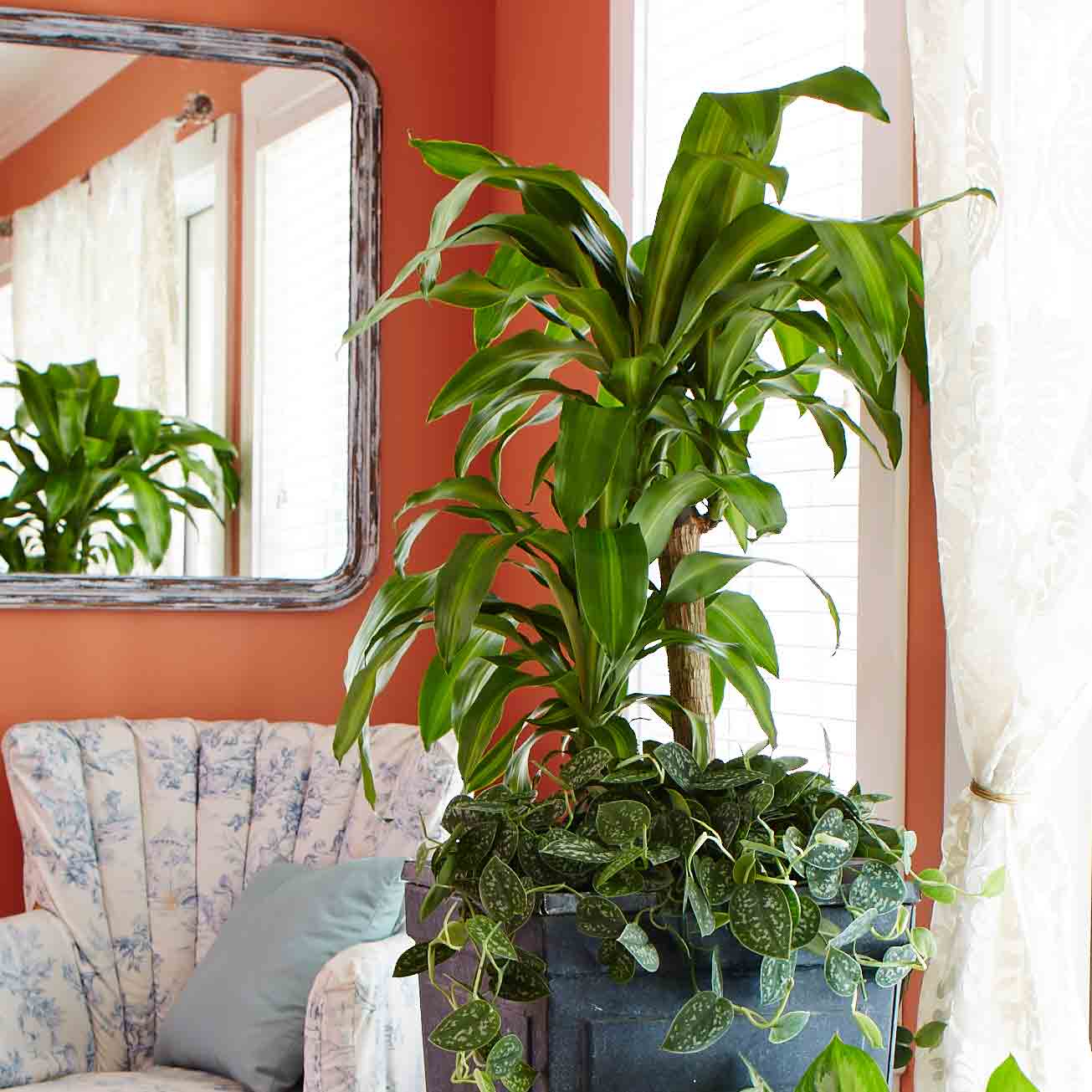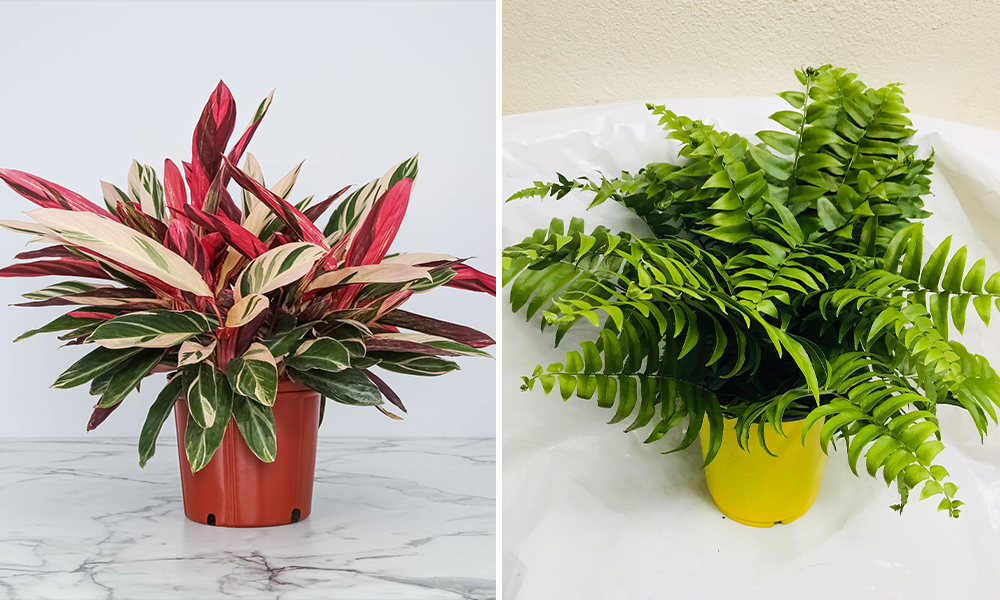Best Low-Light Indoor Plants That Add Greenery to Any Space with Little Light
Best Low-Light Indoor Plants That Add Greenery to Any Space with Little Light
Blog Article
Explore the Unique Benefits of Low-Light Indoor Plants for Your Living Room
Integrating low-light indoor plants right into your living space provides a multitude of advantages that extend far past simple visual appeals. These durable plants not only flourish in atmospheres with minimal sunshine however additionally offer essential functions such as air purification and humidity improvement.
Air Filtration Benefits
Low-light interior plants not only enhance the aesthetic charm of living spaces yet additionally play a considerable duty in air filtration. Research study has shown that specific plant varieties can successfully get rid of common indoor toxins, including benzene, formaldehyde, and trichloroethylene. These substances typically rise from household products such as furnishings, cleaning products, and building products, adding to indoor air high quality concerns.
Plants such as the snake plant, pothos, and peace lily are specifically experienced at filtering dangerous substances from the air while growing in low-light conditions. The process of phytoremediation, in which plants absorb and metabolize toxic substances, makes it possible for these types to contribute dramatically to a much healthier indoor environment. Furthermore, through photosynthesis, plants release oxygen, even more enhancing air high quality.
Including low-light indoor plants into office or home rooms not only supplies aesthetic benefits however also works as a practical method for boosting air quality. By picking the appropriate varieties, people can produce an atmosphere that advertises well-being and lowers exposure to harmful pollutants, making these plants an important aspect in contemporary interior living.

Mood Enhancement Effects
Numerous research studies have actually revealed that integrating interior plants can dramatically boost state of mind and total psychological well-being. The existence of greenery in indoor environments has been linked to minimized tension levels, enhanced sensations of peace, and enhanced psychological health and wellness. Low-light interior plants, specifically, flourish in settings where all-natural light is limited, making them best for various living rooms.
Research indicates that engaging with plants can promote the launch of serotonin, a neurotransmitter related to sensations of happiness and wellness. Furthermore, the act of caring for plants fosters a feeling of responsibility and success, additional adding to favorable psychological wellness end results. In addition, low-light plants such as serpent plants, pothos, and peace lilies have actually been revealed to boost air high quality, which is inherently linked to state of mind improvement.
Including these plants into your home or workplace can create a tranquil atmosphere, using a sensory and visual retreat from the pressure of every day life - Best low-light indoor plants. As people invest enhancing amounts of time inside, the mood-enhancing impacts of low-light interior plants end up being a lot more vital, giving not only visual allure however also a profound effect on emotional wellness
Low Upkeep Requirements
For those looking for to enhance their indoor areas official site without a substantial time dedication, low-light indoor plants are an ideal option due to their reduced upkeep requirements. These resilient plants thrive in less-than-ideal illumination problems, making them excellent for homes and workplaces where natural sunlight is limited.

Pest resistance is another benefit of low-light interior plants. Several varieties are less prone to usual bugs, decreasing the requirement for constant monitoring and treatment. These plants usually grow much more gradually than their high-light equivalents, meaning less constant repotting and trimming are needed.
Visual Charm and Versatility

Additionally, these plants can be prepared in myriad means, whether in groups for a lavish effect or as standalone functions to draw the eye. The options of planter styles-- from streamlined ceramic pots to rustic wood containers-- better boost their visual value, allowing house owners to reveal their individual design.
In addition, low-light plants can be tactically put in areas that may otherwise feel disregarded, such as edges or dimly lit shelves, thus optimizing their ornamental potential. Inevitably, the combination of their striking look and convenience makes low-light interior plants a valuable addition read this post here to any kind of home, producing an inviting atmosphere that advertises health and relaxation.
Boosted Humidity Levels
Enhancing interior humidity degrees is just one of the significant advantages of integrating low-light indoor plants right into living areas. These plants normally launch dampness vapor with a process called transpiration, which occurs when water taken in by the roots relocates through the plant and evaporates from the leaves. This procedure not only enhances moisture yet also adds to a much healthier interior environment.
Improved humidity degrees can alleviate different health issues, such as dry skin, respiratory troubles, and allergic reactions. Many individuals experience pain in dry indoor conditions, particularly throughout cold weather when heater remain in usage. By purposefully putting low-light plants throughout your home, you can produce a much more well balanced moisture degree that fosters overall health.
Furthermore, certain low-light indoor plants, like peace lilies and spider plants, are especially efficient at boosting humidity (Best low-light indoor plants). Thus, low-light indoor plants serve both functional and aesthetic purposes, promoting a healthier atmosphere.
Final Thought
In recap, low-light interior plants offer many benefits that add to a much healthier and much more welcoming living room. Including these durable plants right into interior settings not just raises the ambiance but likewise advertises general health, establishing a tranquil shelter for residents.
Plants such as the serpent plant, pothos, and peace lily are particularly adept at filtering damaging compounds from the air while growing in low-light conditions. Low-light plants such as serpent plants, pothos, and peace lilies have actually been revealed to boost air quality, which is inherently connected to mood improvement.
Low-light indoor plants, such as serpent plants, pothos, and ZZ plants, not only improve the aesthetic landscape of an area however also introduce various structures and shades of green that can match varied interior designs. These plants naturally release wetness vapor with a process understood as see post transpiration, which happens when water soaked up by the roots moves with the plant and vaporizes from the leaves.Furthermore, certain low-light interior plants, like peace lilies and crawler plants, are particularly reliable at enhancing humidity.
Report this page